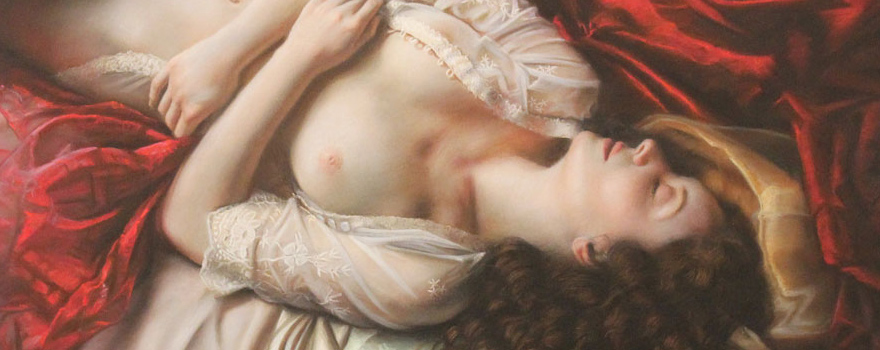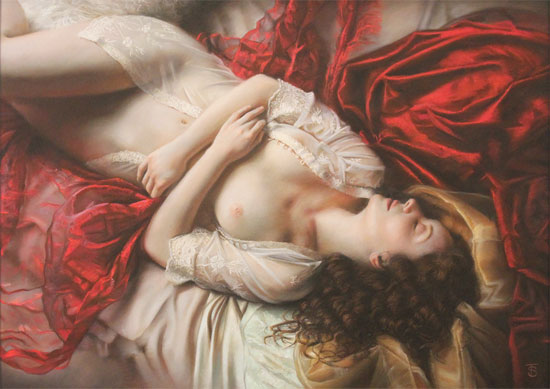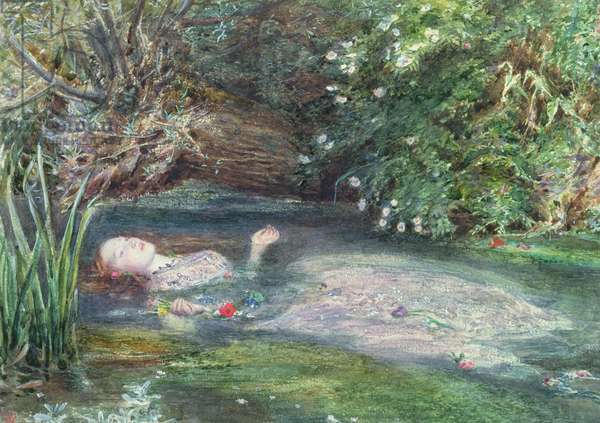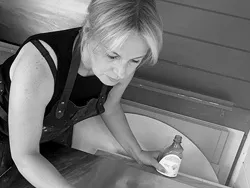

Modern Masters: Tina Spratt and Sir John Everett Millais
by Kirsty Maclennan / Tuesday 17th of December, 2019
Side by side, the work of Sir John Everett Millais and Tina Spratt personifies the shift in the depiction of women in art history. While both artists share in the tradition of praising the female form, the implication of their respective artworks could not be more different.
At the age of eleven, Sir John Everett Millais was the youngest student ever to be accepted into the Royal Academy of Arts. It is here that he met Dante Gabriel Rossetti and William Holman Hunt, with whom he would go on to form the wildly influential Pre-Raphaelite Brotherhood. The Pre-Raphaelites, disillusioned by the academic teachings of the Royal Academy, believed in a hark back to the Romanticism of the High Renaissance and its classical subjects.
Initially attacked as being both blasphemous and overly sentimental, the Brotherhood soon won favour with critics, most notably John Ruskin, for their evident prowess and for breathing a renewed sense of sensuality back into the practises of Western art. Millais’ Ophelia proved to be the crowning glory in this sway of critical opinion. So laboriously precise is Millais’ rendering of the plants and wildflowers that surround the tragic Ophelia, that it is said professors of botany would bring their students to study the painting, rather than take the trouble of travelling into the nearby countryside.
 |
 |
| 'Red and Gold' by Tina Spratt | 'Ophelia' by Sir John Everett Millais |
| Pastel on board | Oil on canvas |
Though Millais’ intention when creating his Ophelia was to depict the sad demise of Shakespeare’s heartbroken heroine, it is a fascinating insight into the representation of women in art, to compare Millais’ despondent sitter with that of Tina Spratt’s daydreaming subject in Red and Gold. Whereas Millais shows a drowned, passive and aghast young woman, giving herself over to the raptures of a beatific death, Tina’s sitter ruminates in a slumber of a different kind. The poet, artist and model for many of the Pre-Raphaelite’s most celebrated works, Elizabeth Siddall, famously contracted pneumonia while posing for Ophelia in a bath warmed only by oil lamps.
Red and Gold depicts a woman caught up in her own pleasure, with every element of Tina’s extrodianry pastel work revolving around her female subject. She is the centre of her own universe, just as much as she is the centre of the artwork. From her chestnut curls, softly unfurling out onto the bed, to the sumptuous fabrics that cosset her like the petals of a flower, the young woman is given a stage to bask in her own sensuous daydream. She is not surrounded by the unforgiving fecundity of nature, but by luxury and comfort. Rather than being a simple object of beauty or a device with which to illustrate a story, Tina Spratt’s sitter holds something back for herself, mysterious and self-contained.
Finding tremendous success from the earliest days of her career, Tina Spratt is truly a master for the modern age, with a distinctly modern sensibility. Her female sitters are very evidently adored by the artist herself, celebrated for their innate sensuality and most importantly, granted agency within each artwork. Being an award-winning artist of ever-growing reputation, Tina’s paintings can be found in private and corporate collections around the globe, timeless acquisitions for established and fledgling collectors alike. You may view her work here.Further News and Articles


Annie Luke Turner Wins Women in Art Prize
Contemproary artist Annie Luke Turner wins in the Abstract Art category.
Sean Durkin: Art For All! 2025
Proudly announcing our fourth annual solo show by British contemporary artist Sean Durkin.

Meet the Artist Event: Clare Haley
An exciting opportunity to meet Yorkshire artist Clare Haley.
York Fine Arts Celebrates 10 Years of Yorkshire Artist Clare Haley
York Fine Arts unveils its 10th anniversary exhibititon of work by contemporary landscape artist Clare Haley.
Touring Dracula Exhibition to be Laid to Rest at York Fine Arts
Delve into an immersive exhibition, featuring ten original pencil illustrations by York artist and our own Senior Gallery Assistant, Kirsty Maclennan.

Five Fine Art Favourites: Spring 2025
As we burst forth into the spring ahead, we select five pieces from our collection that are currently brightening our days.